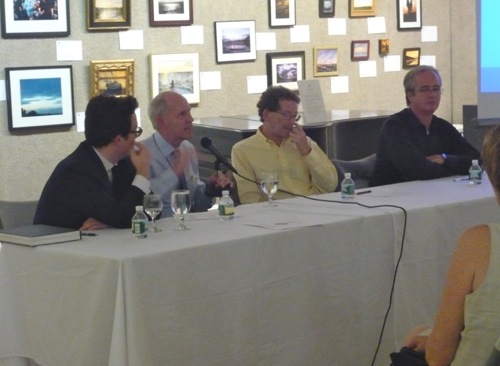Panel Looks at Life of Author Charles Lockwood
Most of the research for the brownstoner bible “Bricks and Brownstone” was conducted through site visits — surprisingly, most of it in Brooklyn, according to Patrick Ciccone, a preservationist and collaborator on the most recent edition of the book, who moderated a panel on the life and legacy of its author, Charles Lockwood, Tuesday at…

Most of the research for the brownstoner bible “Bricks and Brownstone” was conducted through site visits — surprisingly, most of it in Brooklyn, according to Patrick Ciccone, a preservationist and collaborator on the most recent edition of the book, who moderated a panel on the life and legacy of its author, Charles Lockwood, Tuesday at the Salmagundi Club in Manhattan.
However, not all the research took place in Brooklyn: Lockwood and his photographer were out in the Village one day in 1970 shooting for Lockwood’s thesis, which eventually became the first edition of the book, when the Weather Underground bomb accidentally exploded just down the block at 18 West 11th Street. Somehow Lockwood got the credit for the famous photo that ran in the next day’s New York Times, said Ciccone.
Lockwood started out young, publishing the book when he was only 24, and going on to publish many others. In the mid-’80s he moved to California, where he worked in real estate consulting and publicity.
At one point, he did buy a house in New York City, 14 South Oxford Street in Fort Greene, for only $21,000 (the house cost its first buyer $30,000 in 1869). But he quickly moved back to Manhattan, saying he found the area “too difficult to live in,” according to Ciccone.

One of the more amusing artifacts of the early brownstoner era, covered in a slideshow at the event, was a 1973 book titled “You Don’t Have to Be Rich to Own a Brownstone.” Panelist and architectural historian Kevin Murphy called it “laughable,” adding “you don’t have to be a millionaire — you have to be a multi-millionaire to live in a brownstone in the Village.”
Rampant price appreciation is nothing new. Panelist John Foreman, real estate agent and Big Old Houses blogger, bought a house on West 81st Street for only $70,000 in the early days. But he could have bought it three months earlier for $50,000, and a year earlier for $35,000, he said.
Editor’s note: See a video of the panel here.









What's Your Take? Leave a Comment